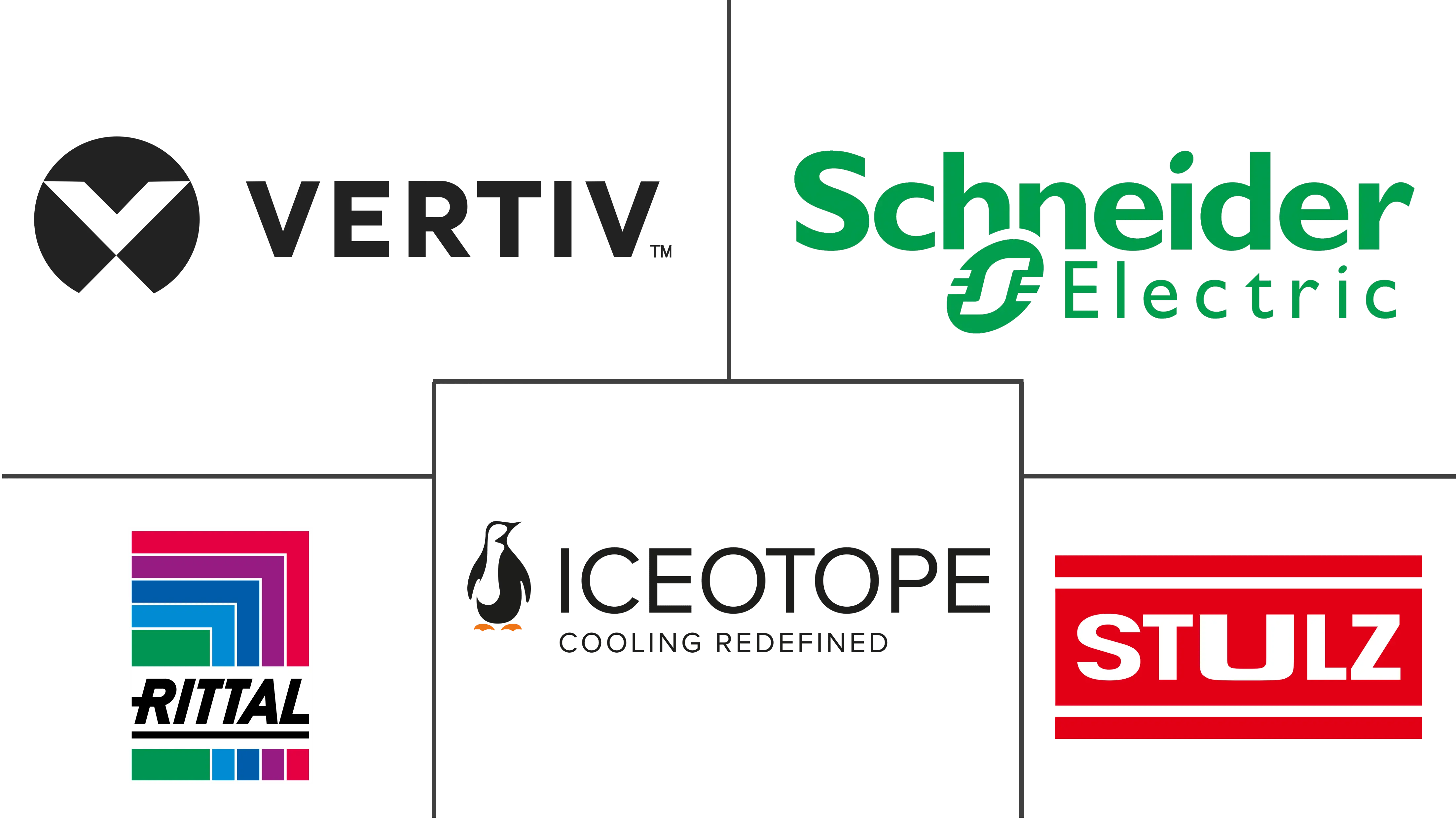South Korea Data Center Cooling Market Size and Share
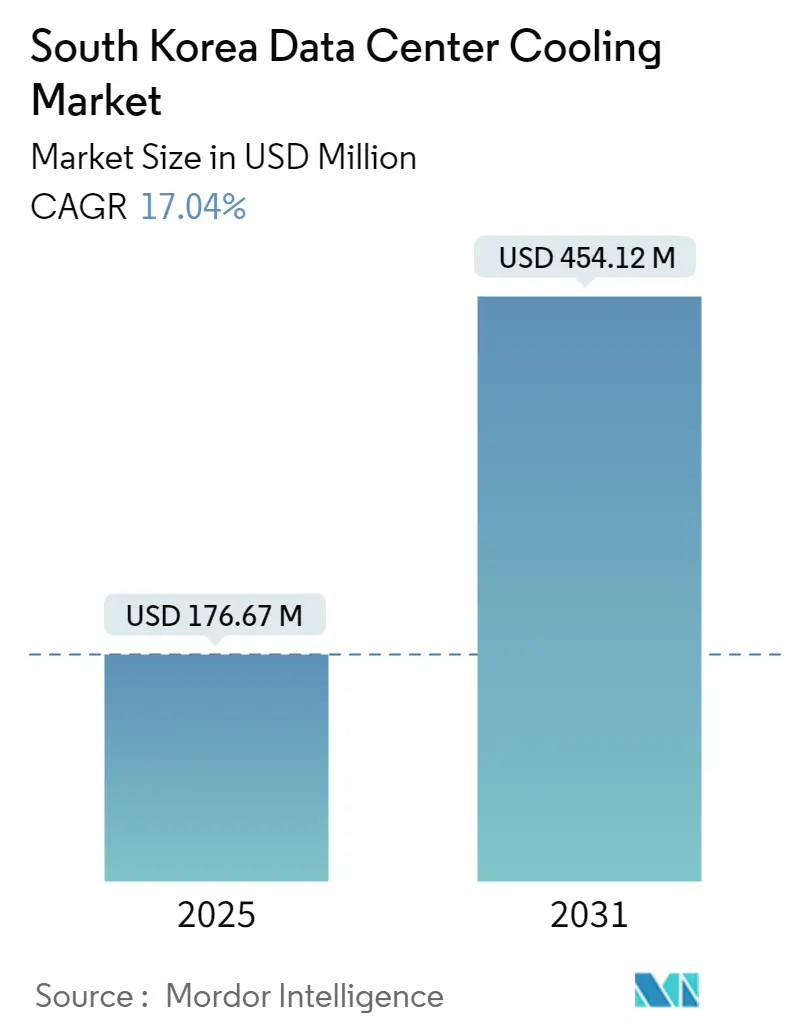
South Korea Data Center Cooling Market Analysis by Mordor Intelligence
The South Korea Data Center Cooling Market size is estimated at USD 176.67 million in 2025, and is expected to reach USD 454.12 million by 2031, at a CAGR of 17.04% during the forecast period (2025-2031).
- The increasing demand for cloud computing among SMEs, government regulations for local data security, and growing investment by domestic players are some of the major factors driving the demand for data centers in South Korea.
- The IT load capacity of the South Korean data center cooling market is expected to reach 2K MW by 2030. The country's construction of raised floor area is expected to increase to 5 million sq. ft by 2030. The country's total number of racks to be installed is expected to reach 270 thousand units by 2030. Greater Seoul is expected to house the maximum number of racks by 2030. Throughout the year, temperatures typically fluctuate between 21 °F and 85 °F, rarely dropping below 11 °F or above 91 °F. Depending upon climatic conditions, the DC cooling is processed in the DC facilities.
- There are close to 10 submarine cable systems connecting South Korea, and many are under construction. One such submarine cable that started service in 2023 is Southeast Asia-Japan Cable 2 (SJC2), which stretches over 10,500 km, with landing points in Geoje, South Korea.
South Korea Data Center Cooling Market Trends and Insights
Liquid-based Cooling is the Fastest-growing Segment of the Market
- Liquid cooling takes advantage of the superior heat transfer properties of water or other liquids to support efficient and cost-effective cooling of high-density racks, up to 3,000 times more effective than using air. Long proven in mainframe and gaming applications, liquid cooling is increasingly being used to protect rack servers in data centers across the region.
- Direct liquid cooling solutions deliver remarkable power usage effectiveness (PUE) values, typically ranging from 1.02 to 1.03. This performance surpasses even the most efficient air cooling systems by a slight margin, usually in the low single-digit percentage range. It is essential to note that the enhanced energy efficiency of direct liquid cooling (DLC) cannot be solely attributed to improvements in power PUE.
- Conventional servers incorporate fans that consume power from the rack, and as such, their operation is accounted for within the IT power segment of the PUE calculation. These fan-related power requirements are considered an integral part of the data center's overall workload, often referred to as the data center payload.
- The use of smartphones and tablets is only expected to increase as technology advances. Many Korean ed-tech startups focus exclusively on education through mobile apps or computers. One such startup, SmartStudy, developed a brand called "Pinkfong," which became a global sensation thanks to its Baby Shark series.
- SmartStudy creates educational entertainment content for young children on YouTube. It is estimated that children over six years spend approximately 50 minutes per day on gaming alone. Such developments contribute to the rising data traffic per smartphone in the country.
- Technological advances have made liquid cooling easier to maintain, scalable, and affordable, reducing data center liquid consumption by more than 15% in tropical climates and 80% in greener areas. The energy used for liquid cooling can be recycled to heat buildings and water, and advanced artificial refrigerants can effectively reduce the carbon footprint of air conditioners.
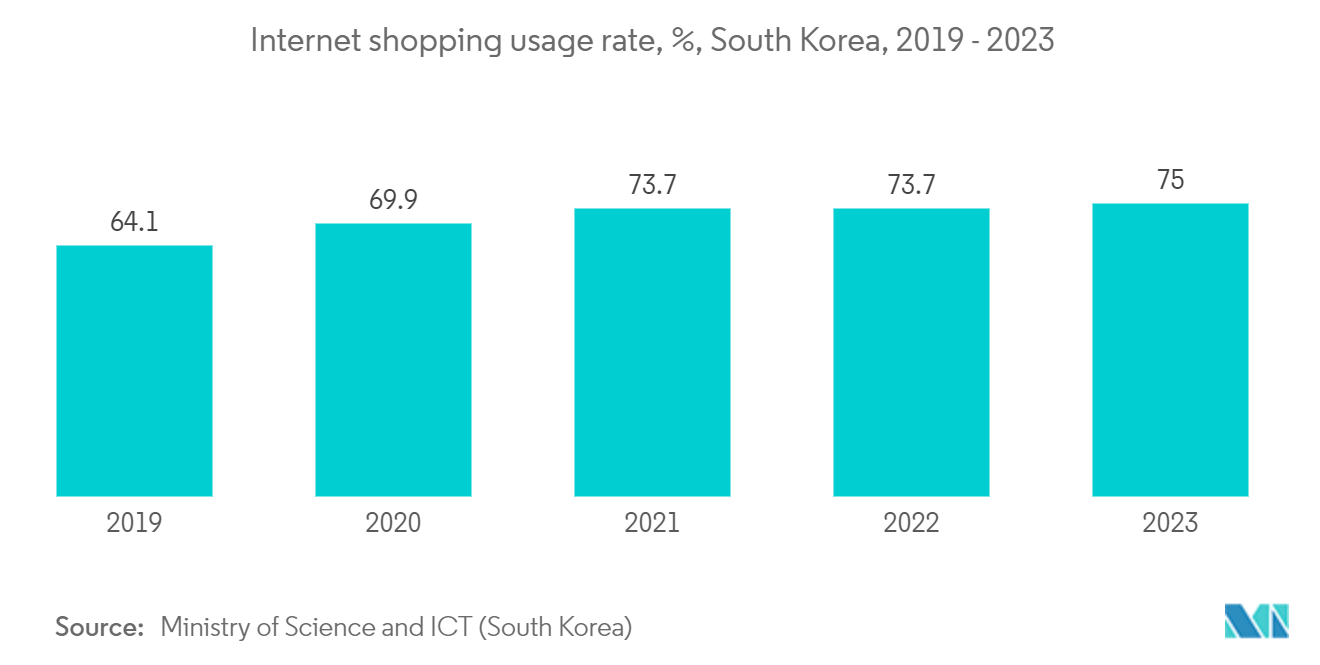
IT and Telecommunication is the Largest Segment of the Market
- The ICT industry is a growth engine of the economy. The two major sub-categories of the telecom industry, telecom equipment and services, respond flexibly to changing market demands and technology trends and continuously invest in innovations that drive growth in the ICT industry.
- The South Korean government decided to lower the barriers to entry for cloud computing services in the country. The move is expected to make foreign tech giants such as Amazon and Microsoft a threat to domestic companies. The US and Chinese tech firms seem open to this proposed deregulation despite growing concerns from KT, Naver, NHN, and other domestic cloud service providers about foreign firms' potential domination of local markets. According to experts, they are beginning to explore opportunities. Such developments have increased the need for data centers from the domestic cloud industry.
- In May 2023, South Korea, Asia's fourth-largest economy, was set to develop a supercomputer tailored for industrial applications to bridge its technological gap. This move is crucial as the nation trails in the realm of super-giant artificial intelligence, a domain vital for future businesses like ChatGPT.
- In 2025, South Korea is slated to commence work on its seventh supercomputer, targeting an exaflop performance, equating to a staggering 1 quintillion floating-point operations per second. Meanwhile, the government is in the process of developing the sixth iteration, aiming for a performance of 600 petaflops capable of handling 600 quadrillion floating-point operations per second. This surge in data processing capabilities is expected to drive up the demand for cooling solutions within the country.
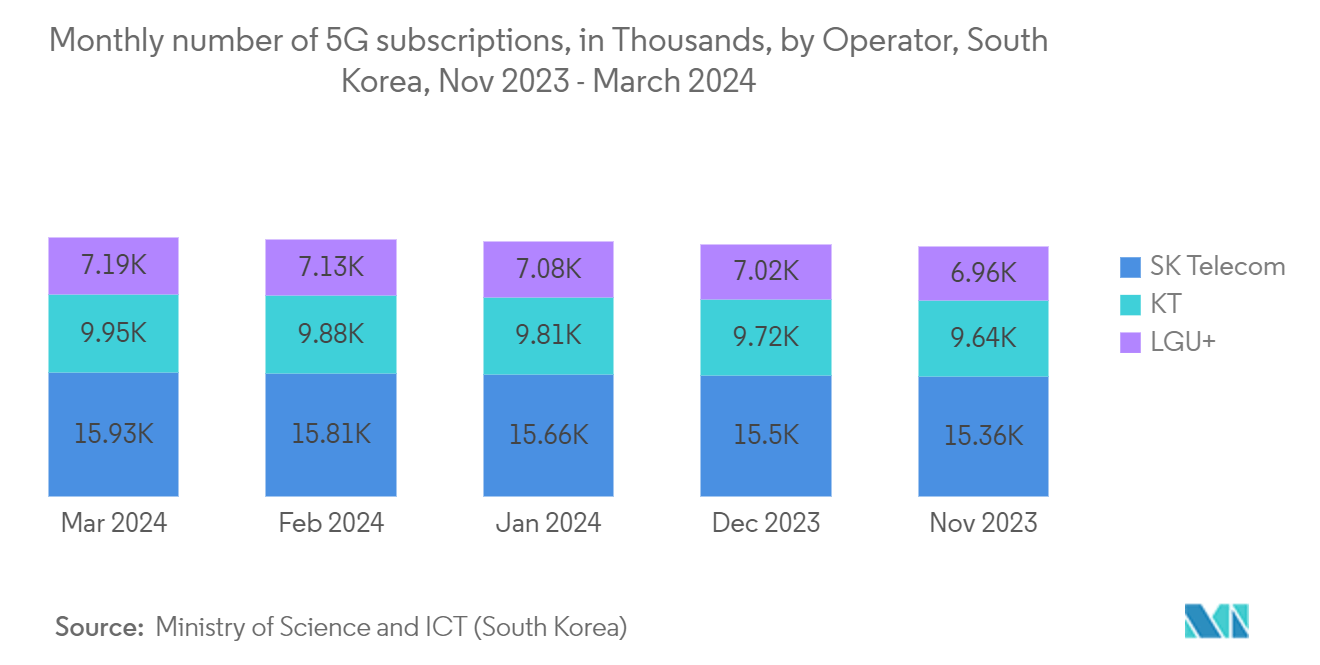
Competitive Landscape
The South Korean data center cooling market exhibits a moderate level of competitiveness but has gained a significant competitive edge in recent years. A select few major players, including Stulz GmbH, Schneider Electric SE, Vertiv Group Corp., Rittal GmbH & Co. KG, and Iceotope Technologies Limited, prominently dominate this market in terms of market share.
March 2023: STULZ, a renowned mission-critical air conditioning company based in Hamburg, announced a noteworthy development. It announced that certain units within its industry-leading CyberAir 3PRO DX series were equipped to utilize the environmentally friendly refrigerant R513A, known for its low global warming potential (GWP). This breakthrough underscored the company's unwavering commitment to delivering the most sustainable air conditioning solutions for data centers. Furthermore, STULZ extended its commitment to sustainability by incorporating the R513A refrigerant into additional products within its portfolio, further promoting eco-friendly practices in the industry.
South Korea Data Center Cooling Industry Leaders
-
Stulz GmbH
-
Schneider Electric SE
-
Vertiv Group Corp.
-
Rittal GmbH & Co. KG
-
Iceotope Technologies Limited
- *Disclaimer: Major Players sorted in no particular order
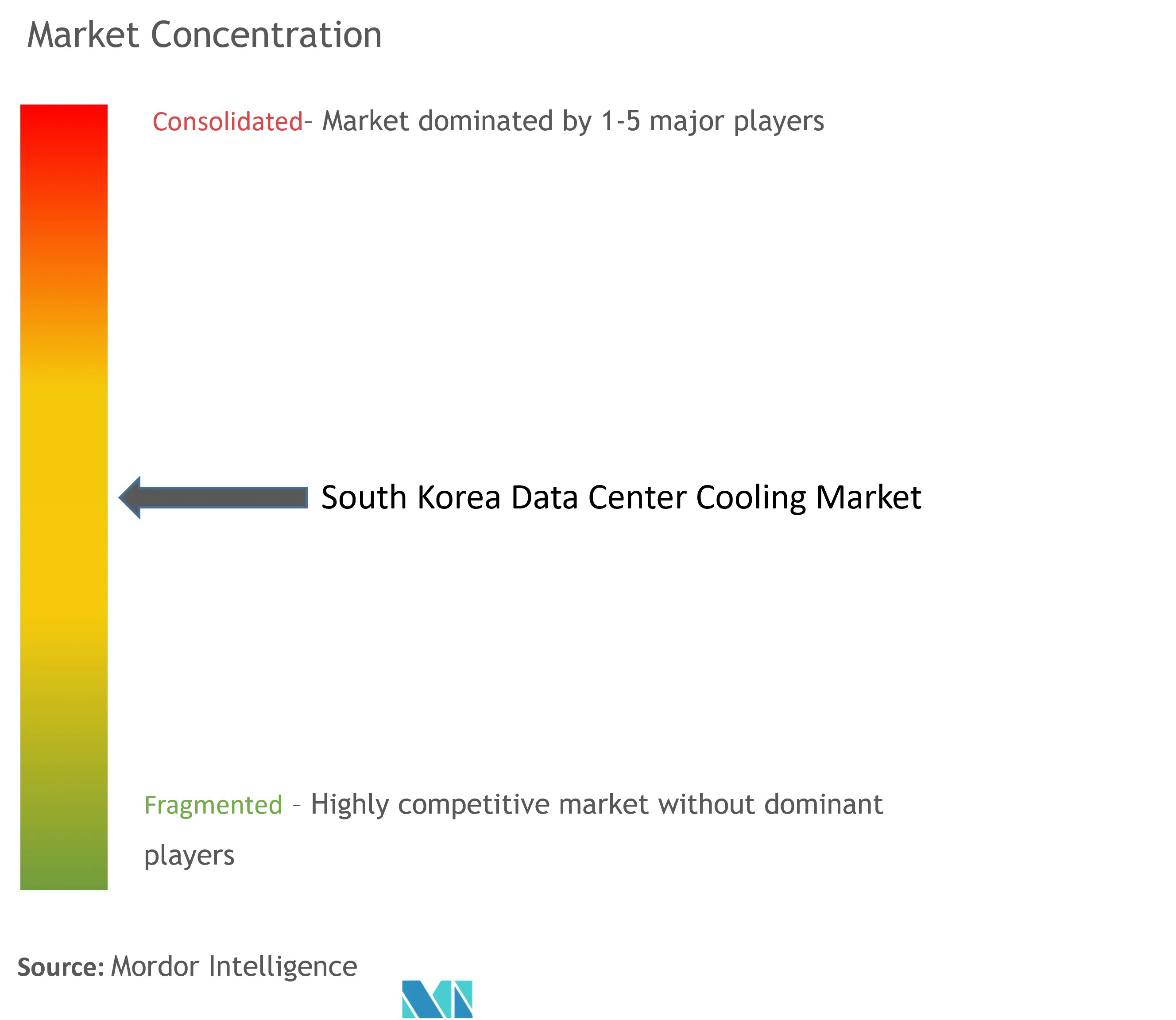
Recent Industry Developments
- October 2023: GRC, DCV Industries, and Dell Technologies collaborated to deliver high-efficiency, containerized data centers to the Middle East. This collaboration leverages GRC's patented single-phase immersion cooling systems, DCV's durable containerized data center enclosures, and Dell's high-density PowerEdge servers. These components are expected to form a comprehensive solution that notably slashes data center construction, upkeep, and energy expenses, especially in challenging environments.
- May 2023: South Korean tech company KT Cloud inked an agreement with Immersion 4 to incorporate immersion cooling technology into its data center infrastructure. This groundbreaking approach involves submerging ICT devices in a non-conductive dielectric solution. By adopting this cutting-edge technology, KT Cloud aims to effectively combat the temperature imbalances commonly encountered in server rooms when relying on traditional air cooling methods.
South Korea Data Center Cooling Market Report Scope
Data center cooling is a set of techniques and technologies to maintain optimal operating temperatures in data center environments. It is critical as data center facilities house many computer servers and network equipment that generate heat during operation. Efficient cooling systems are used to dissipate this heat and prevent the equipment from overheating, ensuring continued reliable operation of the data center. Various methods, such as air conditioning, liquid cooling, and hot/cold aisle containment, are commonly used to control temperature and humidity in data centers.
The South Korean data center cooling market is segmented by technology (air-based cooling [chiller and economizer, CRAH, cooling towers, and other air-based cooling technologies] and liquid-based cooling [immersion cooling, direct-to-chip cooling, and rear-door heat exchanger]), type of data center (hyperscaler, enterprise, and colocation), and end-user industry (IT and telecom, retail and consumer goods, healthcare, media and entertainment, federal and institutional agencies, and other end-user industries). The report offers market sizes and forecasts in value (USD) for all the above segments.
| Air-based Cooling | Chiller and Economizer |
| CRAH | |
| Cooling Tower (Covers Direct, Indirect, and Two-stage Cooling) | |
| Other Air-based Cooling Technologies | |
| Liquid-based Cooling | Immersion Cooling |
| Direct-to-chip Cooling | |
| Rear-door Heat Exchanger |
| Hyperscalers (Owned and Leased) |
| Enterprise (On-premise) |
| Colocation |
| IT and Telecom |
| Retail and Consumer Goods |
| Healthcare |
| Media and Entertainment |
| Federal and Institutional Agencies |
| Other End-user Verticals |
| By Cooling Technology | Air-based Cooling | Chiller and Economizer |
| CRAH | ||
| Cooling Tower (Covers Direct, Indirect, and Two-stage Cooling) | ||
| Other Air-based Cooling Technologies | ||
| Liquid-based Cooling | Immersion Cooling | |
| Direct-to-chip Cooling | ||
| Rear-door Heat Exchanger | ||
| By Type | Hyperscalers (Owned and Leased) | |
| Enterprise (On-premise) | ||
| Colocation | ||
| By End-user Vertical | IT and Telecom | |
| Retail and Consumer Goods | ||
| Healthcare | ||
| Media and Entertainment | ||
| Federal and Institutional Agencies | ||
| Other End-user Verticals | ||
Key Questions Answered in the Report
How big is the South Korea Data Center Cooling Market?
The South Korea Data Center Cooling Market size is expected to reach USD 176.67 million in 2025 and grow at a CAGR of 17.04% to reach USD 454.12 million by 2031.
What is the current South Korea Data Center Cooling Market size?
In 2025, the South Korea Data Center Cooling Market size is expected to reach USD 176.67 million.
Who are the key players in South Korea Data Center Cooling Market?
Stulz GmbH, Schneider Electric SE, Vertiv Group Corp., Rittal GmbH & Co. KG and Iceotope Technologies Limited are the major companies operating in the South Korea Data Center Cooling Market.
What years does this South Korea Data Center Cooling Market cover, and what was the market size in 2024?
In 2024, the South Korea Data Center Cooling Market size was estimated at USD 146.57 million. The report covers the South Korea Data Center Cooling Market historical market size for years: 2019, 2020, 2021, 2022, 2023 and 2024. The report also forecasts the South Korea Data Center Cooling Market size for years: 2025, 2026, 2027, 2028, 2029, 2030 and 2031.
Page last updated on:
South Korea Data Center Cooling Market Report
Statistics for the 2025 South Korea Data Center Cooling market share, size and revenue growth rate, created by Mordor Intelligence™ Industry Reports. South Korea Data Center Cooling analysis includes a market forecast outlook for 2025 to 2031 and historical overview. Get a sample of this industry analysis as a free report PDF download.
